Climbing in the desert presents unique challenges that differ from mountain or crag climbing. As a guide who has spent my entire life in Wadi Rum, I've learned what it takes to stay safe in this beautiful but demanding environment. Here's everything you need to know about desert climbing safety.
Heat Management
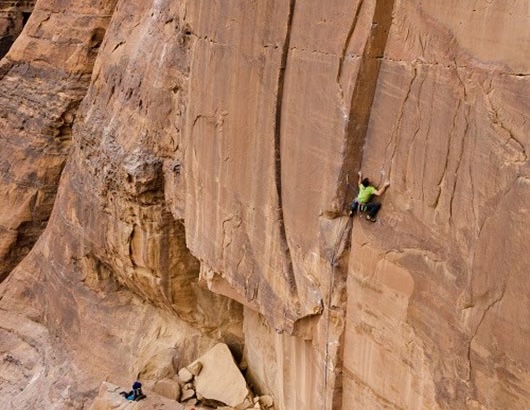
Heat is the biggest challenge in desert climbing. Even in winter, the sun can be intense, and in summer, temperatures can exceed 40°C (104°F).
Timing Your Climbs
- • Summer (June-August): Start climbs at dawn (5-6 AM) to finish before midday heat. Avoid afternoon climbing.
- • Spring/Fall (March-May, Sept-Nov): More flexible timing, but still best to avoid midday sun on exposed routes.
- • Winter (Dec-Feb): Can climb all day, but mornings can be cold-bring layers.
Choosing Shaded Routes
Route selection based on sun exposure is crucial:
- • North Faces: Stay shaded most of the day-ideal for hot weather
- • East Faces: Morning sun, afternoon shade
- • West Faces: Morning shade, afternoon sun
- • South Faces: Full sun-avoid in hot weather, good for winter

Recognizing Heat Illness
Know the signs of heat exhaustion and heat stroke:
- ⚠️ Heat Exhaustion: Heavy sweating, weakness, dizziness, nausea, headache
- 🚨 Heat Stroke (Emergency): No sweating, confusion, rapid pulse, loss of consciousness
Emergency Action for Heat Stroke:
- • Move to shade immediately
- • Cool the person with water (pour on skin, wet clothing)
- • Call for emergency help
- • Do NOT give water if unconscious
Water Management
Water is life in the desert. Dehydration happens faster than you think.
How Much Water?
- • Minimum: 3 liters per person for a half-day climb
- • Full Day: 4-5 liters per person
- • Hot Weather: Add 1-2 liters more
- • Multi-Day: Plan for 5-6 liters per person per day
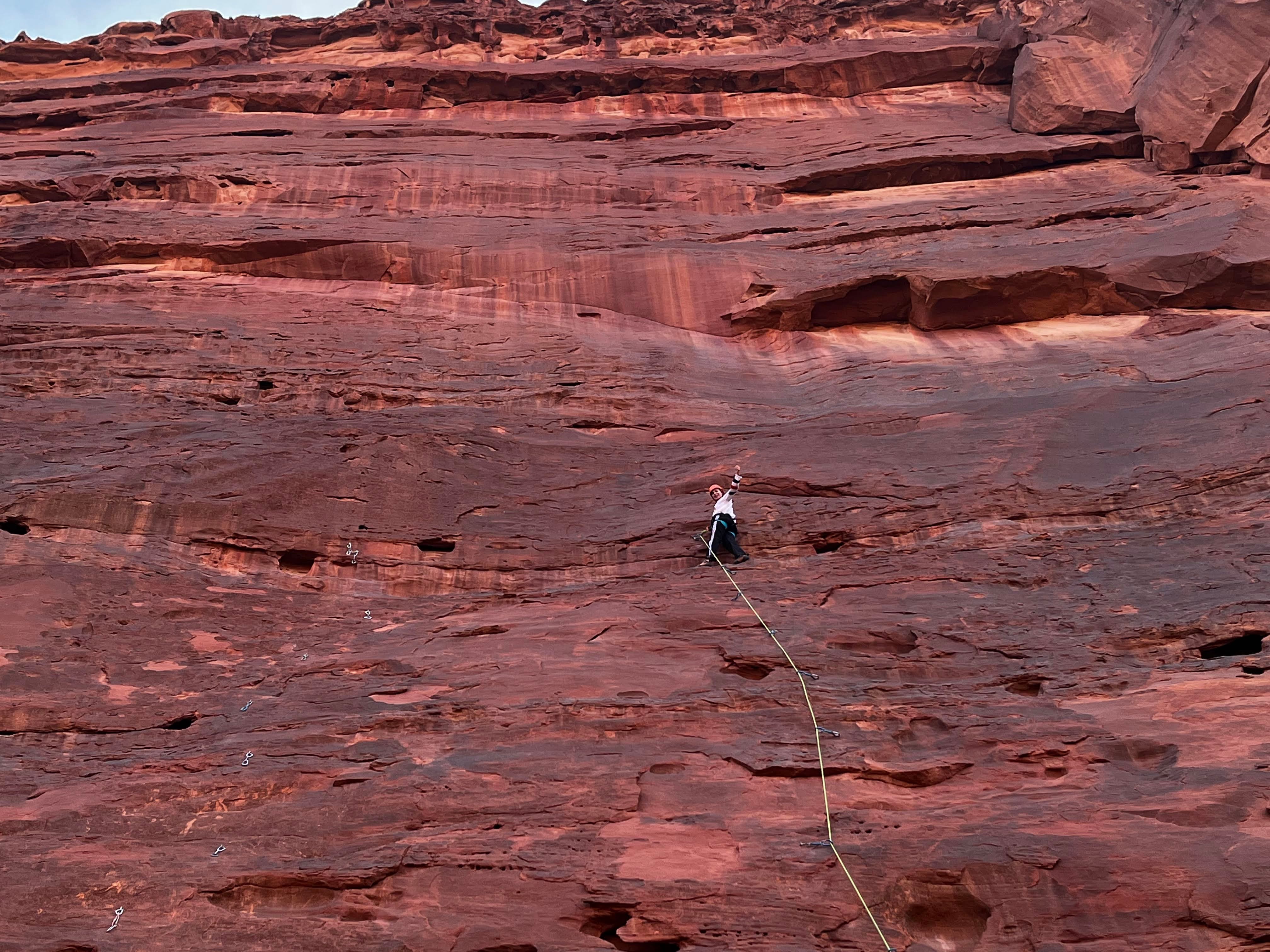
Hydration Strategy
- • Drink BEFORE you feel thirsty-thirst means you're already dehydrated
- • Drink small amounts regularly rather than large amounts occasionally
- • Add electrolytes or salt to water on long climbs
- • Monitor urine color-should be light yellow (dark = dehydrated)
Sun Protection
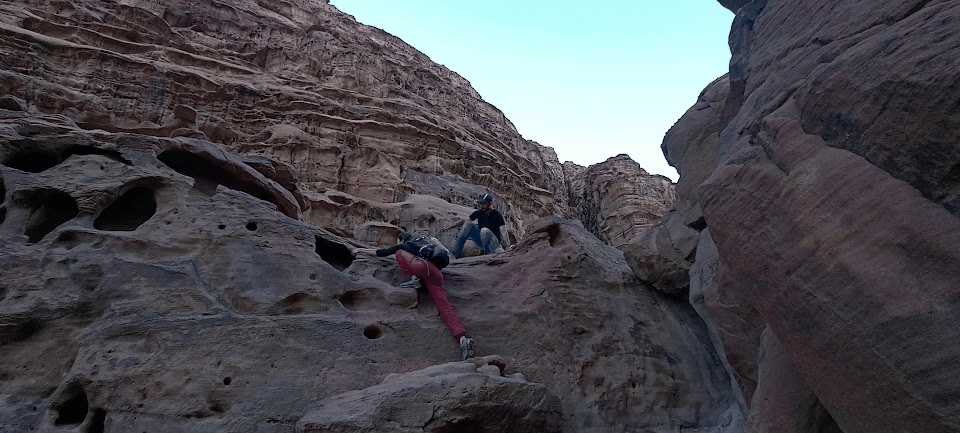
The desert sun is intense, even in winter. UV radiation is stronger at altitude.
Essential Protection
- ✓ Sunscreen: SPF 50+, reapply every 2 hours
- ✓ Hat: Wide-brimmed or with neck flap (Bedouin keffiyeh works great!)
- ✓ Sunglasses: UV protection essential, especially on light-colored rock
- ✓ Clothing: Light-colored, long sleeves better than shorts and t-shirt
- ✓ Lip Balm: SPF lip balm-lips burn easily
Rock-Specific Hazards
Loose Rock
Sandstone can be fragile. Always:
- • Test holds before weighting them
- • Warn climbers below before pulling on questionable holds
- • Wear helmets-rockfall is a real danger
- • Stay out of fall line when others are climbing above
Flash Floods
Desert flash floods are sudden and dangerous:
- ⚠️ Never climb in canyons or gullies during or after rain
- ⚠️ Rain can fall in mountains and flood valleys below-watch for dark clouds
- ⚠️ If you hear rushing water, get to high ground immediately
- ⚠️ Wait 24 hours after rain before entering narrow canyons
Navigation and Route Finding
Getting lost in the desert is serious. Unlike forests, there's little shade and distances are deceptive.
Stay Found
- • Hire a Guide: Seriously, this is the best safety decision
- • GPS Device: Bring one with downloaded maps (phone batteries die in heat)
- • Mark Your Route: Note landmarks, take photos of junctions
- • Tell Someone: Always inform someone of your plans and expected return
If You Get Lost: STOP. Don't wander. Stay in shade if possible. Conserve water. Use phone/GPS to call for help. If no signal, stay put-search teams will find you faster if you're stationary.
Wildlife Awareness
Wadi Rum has wildlife that deserves respect:
Snakes and Scorpions
- • Check shoes and gear before use
- • Don't put hands in cracks or holes without looking first
- • Most active at dawn/dusk and night
- • If bitten: stay calm, immobilize limb, seek medical help immediately
Insects
- • Flies can be annoying in warmer months-bring insect repellent
- • Bees nest in rock crevices-give them space
Emergency Preparedness
Essential Emergency Kit
- ✓ First aid kit (bandages, pain relief, antiseptic)
- ✓ Emergency blanket (desert nights are cold)
- ✓ Headlamp with extra batteries
- ✓ Whistle for signaling
- ✓ Fully charged phone/GPS device
- ✓ Extra water and snacks
Emergency Contacts
- 📞 Emergency Services: 911 (works in Jordan)
- 📞 Wadi Rum Visitor Center: +962 3 209 0600
- 📞 Your Guide: Always have your guide's number saved
Climb Safely with an Experienced Guide
The best safety decision you can make is climbing with a certified local guide. I know every route, every water source, every shelter. I carry emergency equipment, have rescue training, and can handle desert emergencies. Most importantly, I can prevent problems before they happen.
Book a Certified GuideFinal Thoughts
Desert climbing is incredibly rewarding, but it demands respect. The environment is harsh and unforgiving. However, with proper preparation, good judgment, and ideally an experienced guide, you can safely enjoy everything Wadi Rum has to offer.
Remember: the mountain will always be there tomorrow. If conditions aren't right, if you're not feeling well, if something doesn't feel safe-turn back. There's no shame in retreating. The desert has taught my people patience and respect for nature's power. These lessons have kept us alive for generations.
Safety information based on traditional Bedouin knowledge and modern best practices. Additional technical details sourced from "Treks and Climbs in Wadi Rum, Jordan" by Tony Howard, used with permission.
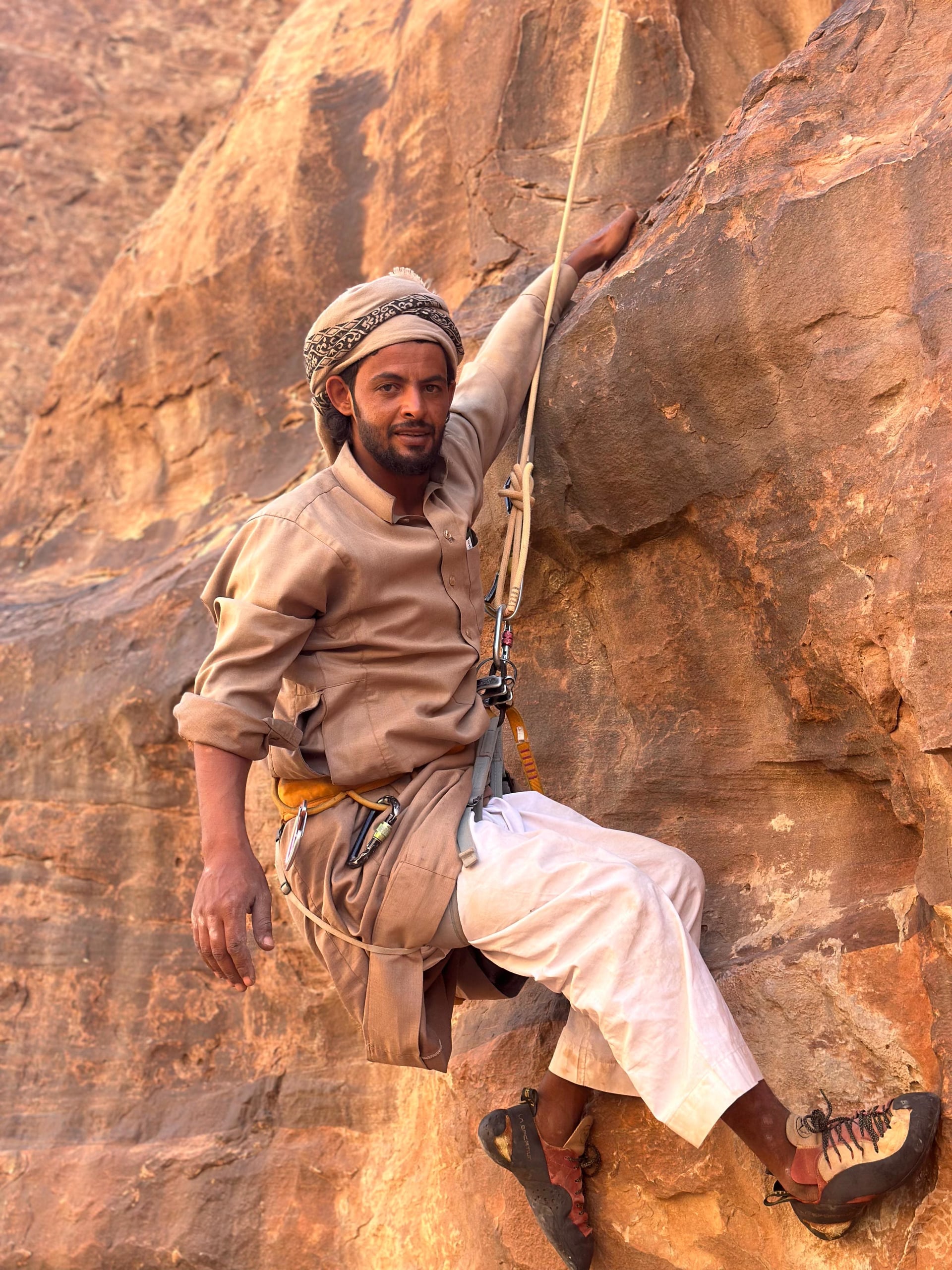
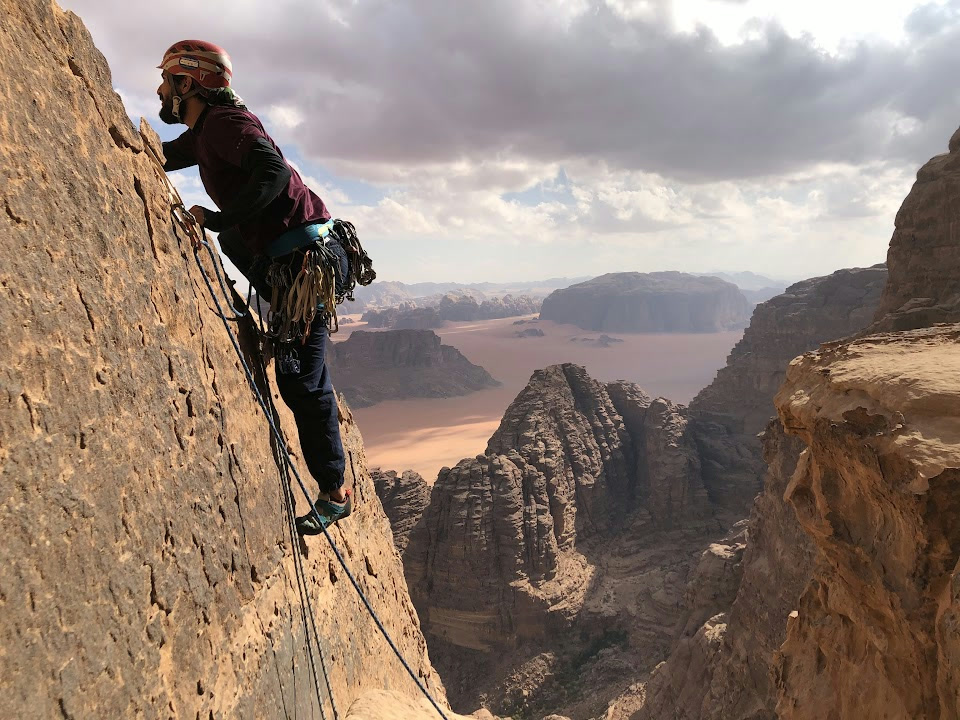
💬 Join the Discussion
Share your thoughts, experiences, or questions about this article